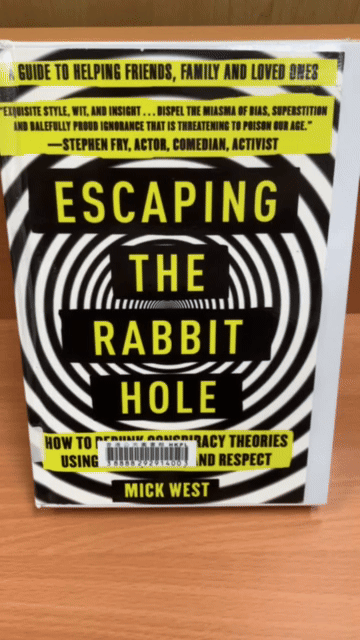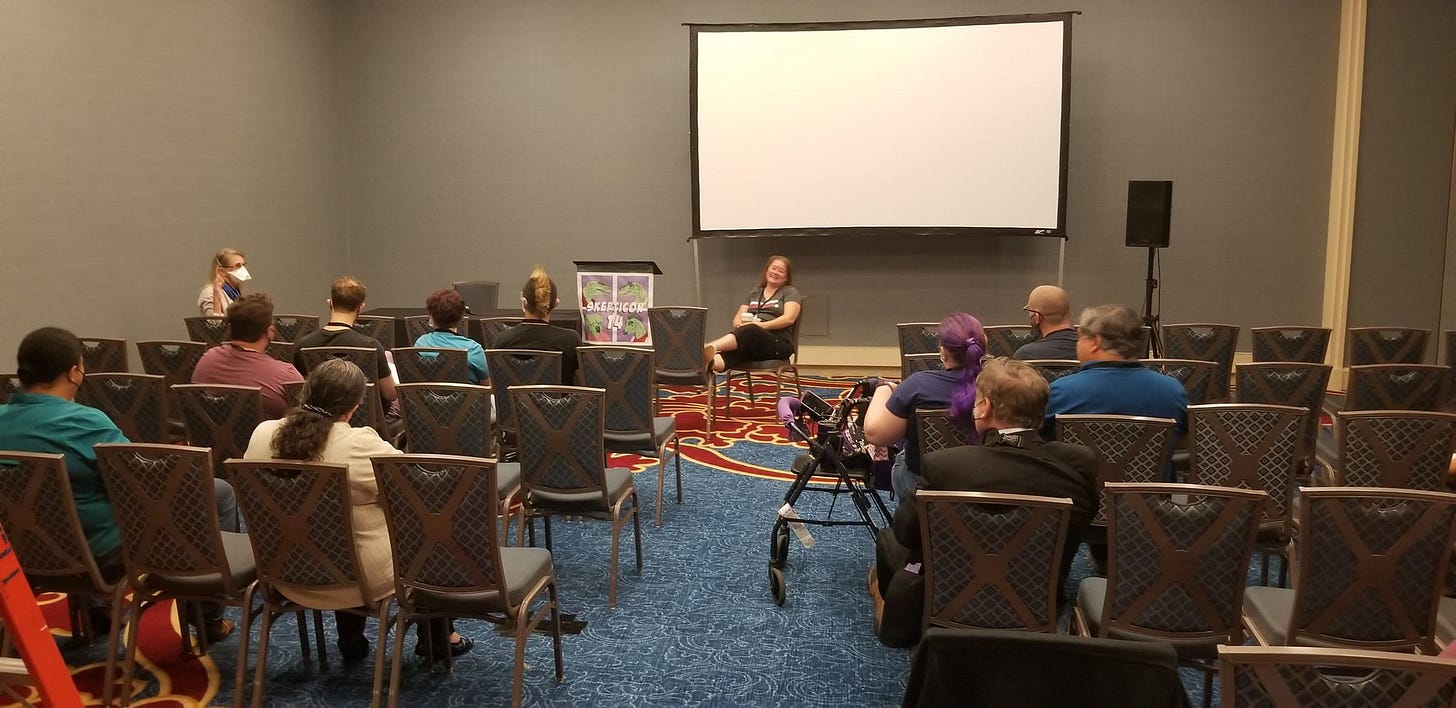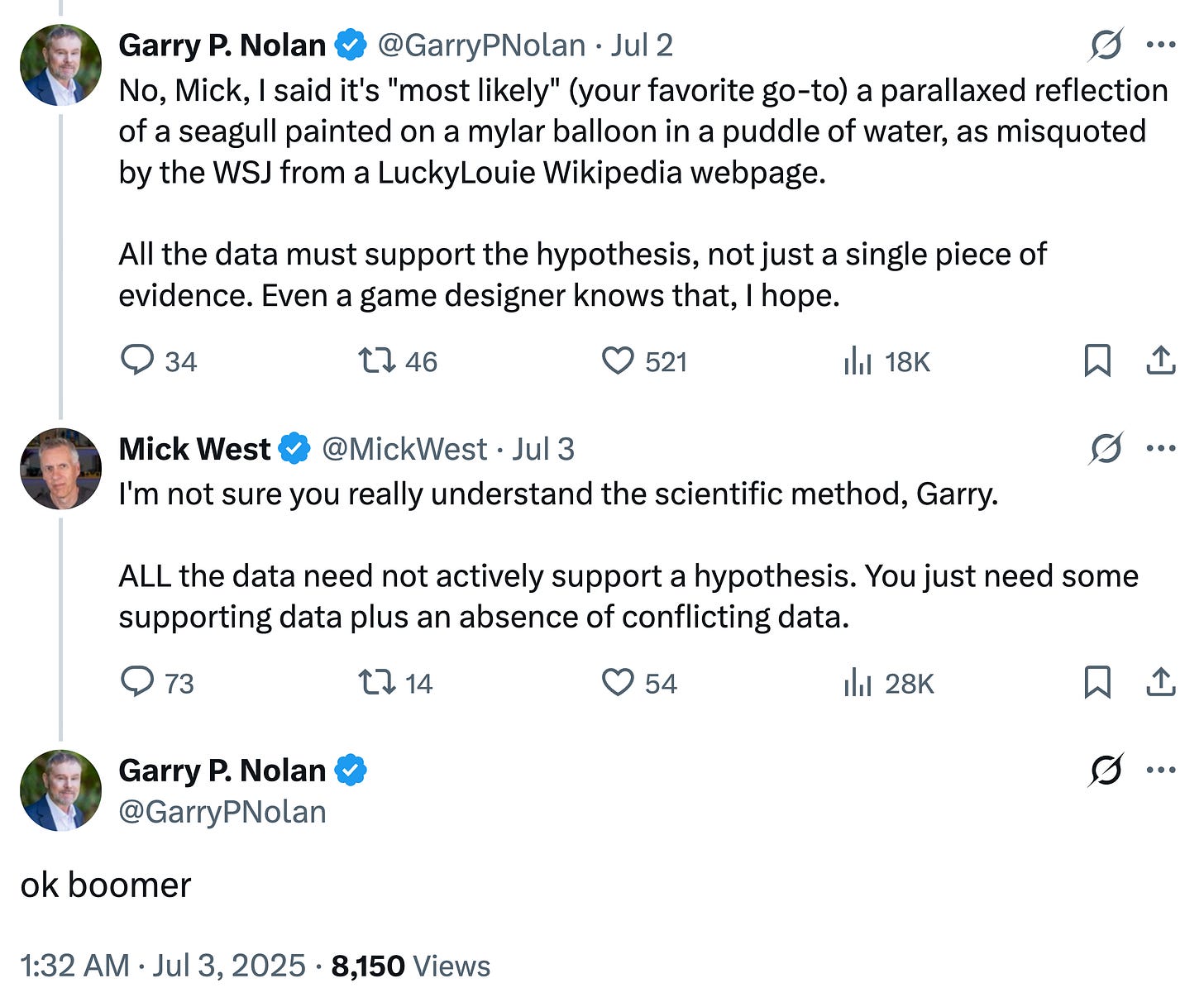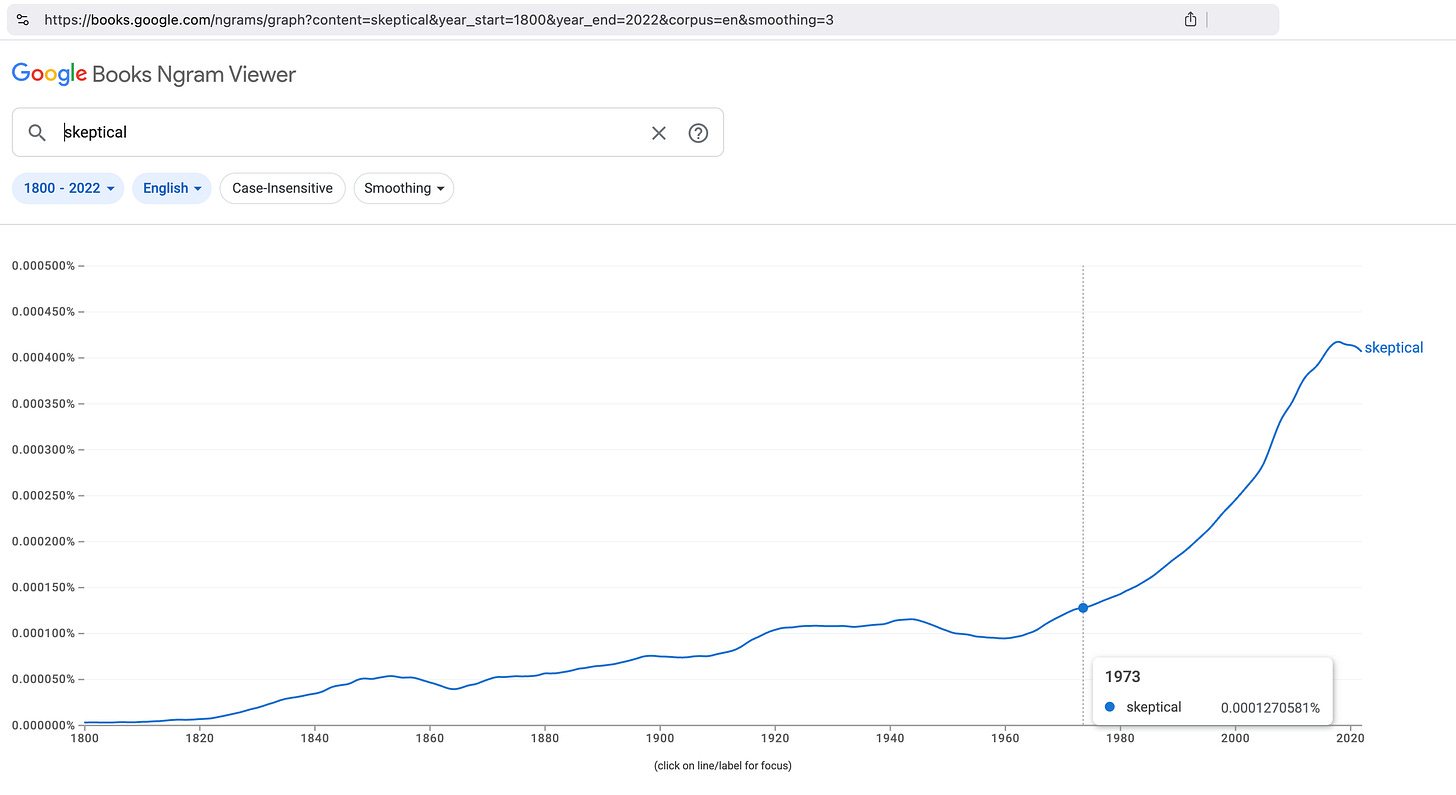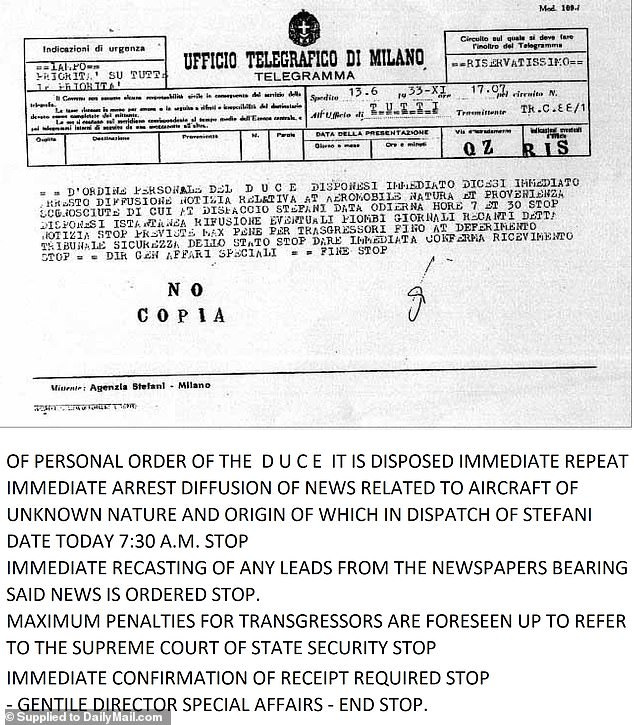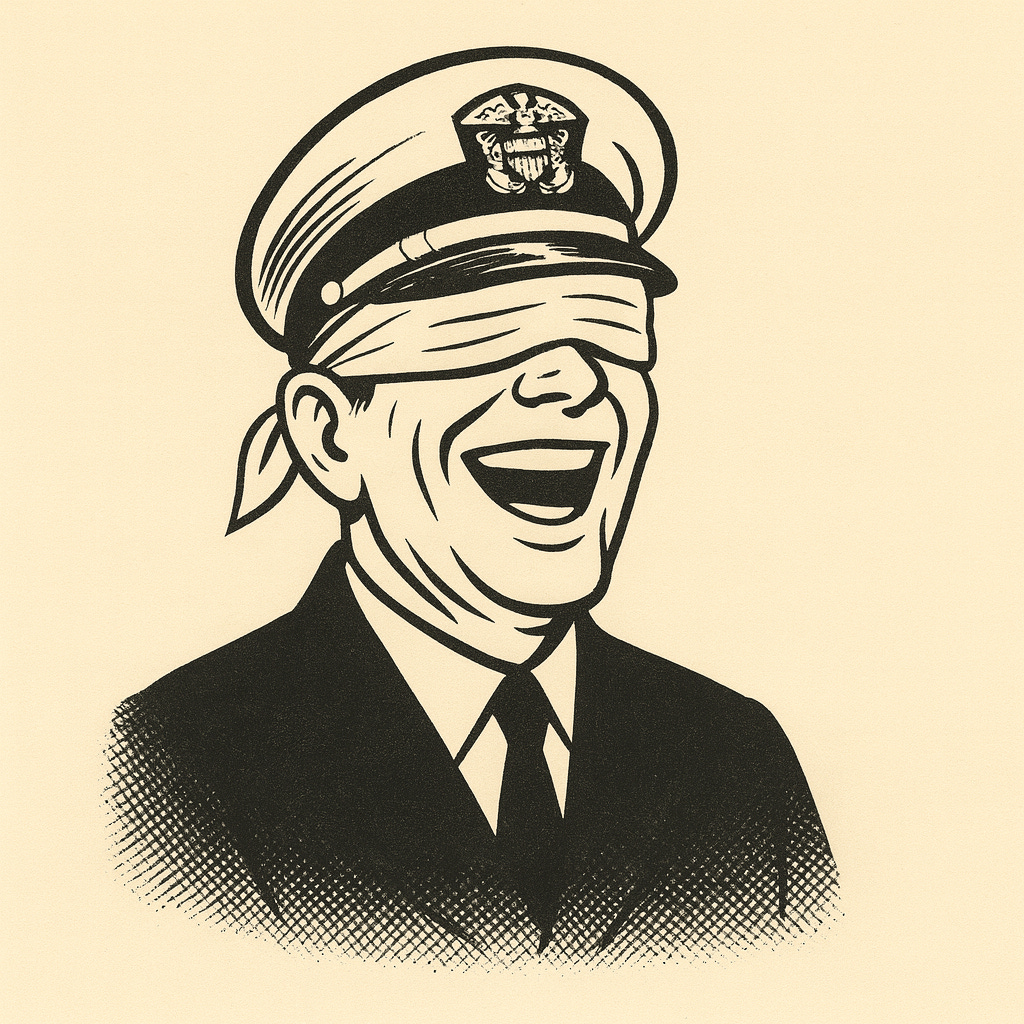Unquestionably Skeptical (About UFOs)
The Rise of Dogmatic, Pseudo-Skeptical Organizations: Their Network, Targets and Key Figures
It began with a simple question:
“Does anyone know a debunker in real life? I’m not talking about people with the same attitudes or talking points. A lot of those get made by regular people as a sort of lazy reaction. I’m talking about, ‘Does anyone know anyone that spouts debunked points and goes out of their way to broadcast them, closely studying UFO news so that they can constantly tell everybody how there are no such things as UFOs?’”1
The publicity and profile of unabashed UFO debunkers–Michael Shermer, Mick West, Philip J. Klass, Neil deGrasse Tyson and others–are not driven by popularity. Taking Mick West as a recent example, his book, “Escaping the Rabbit Hole” published in September 2018, holds an Amazon Best Sellers Rank of #871,662.2 According to Book Beam’s sales estimator, that ranking represents zero sales per day and fewer than 30 per month.3 Actual readership is likely even lower. Public records from university and library systems show multiple years with zero checkouts, despite donated copies.
And yet—despite microscopic sales and attention—West is routinely booked as a “popular scientific investigator” in media appearances and promoted as a Fellow at the Committee for Skeptical Inquiry (CSI). The gap between commercial reality (viewers, readers, attendees, subscribers) and the mainstream amplification of dogmatic skeptics is not an outlier.4 It is the norm.5

Skeptics vs. Scientists
As a group, high-profile skeptics contribute little to scientific inquiry compared to working scientists actively investigating UAP/NHI with domain expertise—such as Garry Nolan, Avi Loeb, Karl Svozil, Kevin Knuth, and Beatriz Villarroel.
When comparing a dozen Sol Symposium scientists with an equal number of well-known “scientific skeptics” (Shermer, West, Tyson, et al.), the difference is vast6:
The scientists who are Fellows of CSI and produce a significant amount of scientific research avoid investigating the UAP topic scientifically. The ones who do, skew heavily into one study group: psychology. Psychology related fields of study account for 29% of the people who are Fellows of CSI, while generating the lion’s share—62%—of the total CSI Fellows’ citation tally.
Much of that literature is not research psychology, rather it’s reductionist. Papers often focus on attributing witness accounts of UAP to hallucinations or mental error. The repetition of these faulty observer talking points feels less like science and more like propaganda.7
Dogma vs. Method
Consider Mick West again. He is near-zero for tallied contributions to scientific research. Instead of promoting inquiry, he criticizes working scientists’ inquiries. Contrast this with Garry Nolan–who continues to run successful laboratories, experiments, produce peer-reviewed works, file patents, earn citations, and rely upon the scientific method for his livelihood. Somehow Nolan—a scientific force in successful inquiry—does not have his work lauded by West, instead he is on the receiving end of West’s critiques, like in this literal back-and-forth from July 2025:
For a group whose mission is to, “...promote scientific inquiry,” they repeatedly show themselves to not be fans of scientific inquiry.8 If Mick West is a CSI Fellow in good standing, then their definition of scientific inquiry is clearly at odds with the scientific method.
Their skepticism isn’t inquiry. It’s dogma.9
Even though it is dogma, it has been widely successful over the past few decades, with skepticism rising significantly.10
However, the main item of the skeptical organizations’ efforts: ‘inquiry’ remains at all time historic lows.11
Hypothesis
This series proposes a central hypothesis:
The manufactured popularity of dogmatic skeptics as media authorities far exceeds what their attention, contributions, academic accomplishments, or sales metrics justify.
Historically, the rise of organized skepticism correlates with Intelligence Community (IC) efforts to outsource influence operations into the private sector. Second, the topic with the biggest disparity between scientific data and the most dedicated, dogmatic debunking within their networks is UAP/NHI.12 By analyzing the history of manufactured skepticism and their methods and rates of attention towards UFOs, their mission will become clear.
With this hypothesis at its core, the series will pull the thread that connects witnessed and instrument-measured UAP accounts, material NHI crash retrievals, reverse engineering, interrogation and medical analysis with the people that work to deceive, debunk and disinform about them. To set the stage for how agents deceive in the modern world requires a brief history lesson.
At the root of the disparity is deception.
The Historical Foundation: Global deception in a world at war
The 30 years between the beginning of World War I and the end of World War II, saw the battlefield circumscribe the globe and the military-industrial complex (MIC) rise up to fund, fuel and mechanize it. As war beyond borders spread, so too did the sources and methods to obscure it. In the blandly named, Communications Instructions the U.S. Navy defines “deception” in its use over radio being, “of two sorts: (a) Manipulative-transmissions used to conceal from the enemy the locations, movements, and strength of U. S. naval forces by the use of misleading material in our own communication channels; (b) Imitative-the use of radio to simulate enemy transmissions in order to confuse or deceive the enemy in his own channels.”13
Even in the early 20th century, the war planner had to take into account an enemy–and a public–that could receive radio broadcasts in realtime, relaying signals, methods and tactics, or news from the frontlines broadcast directly into their homes. Deception in war was nothing new. Sun Tsu wrote as much in the 6th Century BCE, “兵者詭道也 / All warfare is based on deception.”14
By the early 20th century, deception wasn’t just a tactic—it was a global system.
1933: The Magenta Crash
In the middle of the two wars, in 1933, one of the first recorded UAP crash retrievals took place in Magenta, Italy.15 While not yet at the historical beginning of World War II,16 its players were in place. Adolf Hitler was Chancellor in Germany, Benito Mussolini was Prime Minister and soon to be Il Duce in Italy, John Foster Dulles and Allen Walsh Dulles were active as financiers, diplomats and spies within Europe, Joseph Stalin was General Secretary of the Soviet Union, Franklin Delano Roosevelt was President of the United States, Winston Churchill was a popular Member of Parliament in the United Kingdom–later to become Prime Minister, and Hirohito was Emperor of Japan.
With the prospect of news spreading rapidly on the crash in Magenta, media management was the decree, as reported 90 years later in the Daily Mail:
They include two June 1933 telegrams in Italian, one demanding 'absolute silence' over an 'alleged landing on national soil of unknown aircraft'.
Another, dated June 13, threatens the 'immediate arrest' and 'maximum penalties' for any journalists reporting news of an 'aircraft of unknown nature and origin'.
'Immediate recasting of any leads from the newspapers bearing said news is ordered,' the second telegram said.
Both say they are by 'personal order' of 'Il Duce' – Mussolini himself.17
The game was afoot. There would be no diplomatic detente. The Magenta craft crashed into a world preparing to wage war. Any leak of its technology that could shift the scales of who would come out ahead at the balance would not be tolerated.
Three debunkers would emerge from this period, two of which were directly connected to the military at pinnacles of its efforts in secrecy and science. While the third was a young, promising engineer working for one of the largest companies in the world, General Electric. These three were: Donald H. Menzel, Edward U. Condon, and Philip J. Klass. Coming articles in this series will examine each man as an individual and their efforts coordinated as a group.
Leading the pack, in age and rank, was U.S. Navy Commander, Donald Howard Menzel.
Please subscribe to stay up to date with our…
NEXT ISSUE IN THE UNQUESTIONABLY SKEPTICAL SERIES ! …
Donald Howard Menzel: Professor of the ‘most precious faculty’
Resources and References
Garry Nolan - Executive Director of the Board at The Sol Foundation.
Dr. Nolan is the Rachford and Carlota A. Harris Professor in the Department of Pathology at Stanford University School of Medicine. He trained with Leonard Herzenberg (for his Ph.D.) and Nobelist Dr. David Baltimore (for postdoctoral work for the first cloning/characterization of NF-κB p65/ RelA and the development of rapid retroviral production systems). He has published over 350 research articles and is the holder of 40 US patents and has been honored as one of the top 25 inventors at Stanford University. Full bio at https://thesolfoundation.org/people/garry-nolan/
The Sol Foundation - Science, Policy, and Public Education for the Post-UAP World
The Sol Foundation brings together experts from academia and government to address the philosophical, policy, and scientific problems raised by the likely presence on the Earth of UAP. https://thesolfoundation.org/about/
Avi Loeb - Frank B. Baird Jr. Professor of Science
Abraham (Avi) Loeb is the Frank B. Baird, Jr., Professor of Science at Harvard University and a bestselling author (in lists of the New York Times,Wall Street Journal, Publishers Weekly, Die Zeit, Der Spiegel, L'Express and more). He received a PhD in Physics from the Hebrew University of Jerusalem in Israel at age 24 (1980-1986), led the first international project supported by the Strategic Defense Initiative (1983-1988), and was subsequently a long-term member of the Institute for Advanced Study at Princeton (1988-1993). Loeb has written 9 books, including most recently, Extraterrestrial and Interstellar, as well as over a thousand scientific papers (with h-index of 131 and i10-index of 614) on a wide range of topics, including black holes, the first stars, the search for extraterrestrial life and the future of the Universe. Full bio at https://astronomy.fas.harvard.edu/people/avi-loeb
The Galileo Project for the Systematic Scientific Search for Evidence of Extraterrestrial Technological Artifacts
The goal of the Galileo Project is to bring the search for extraterrestrial technological signatures of Extraterrestrial Technological Civilizations (ETCs) from accidental or anecdotal observations and legends to the mainstream of transparent, validated and systematic scientific research. This project is complementary to traditional SETI, in that it searches for physical objects, and not electromagnetic signals, associated with extraterrestrial technological equipment. https://projects.iq.harvard.edu/galileo/home
Karl Svozil - Associated Editor of journals in Physics and Computer Science
Karl Svozil is an Austrian theoretical physicist at the TU Wien specializing in quantum theory and the logical foundations of chaotic systems. After studies in Vienna and Heidelberg, he continued his career as a visiting scientist in various locations, in particular, UC Berkeley and the Department of Energy's Lawrence Berkeley National Laboratory as well as Lomonosov Moscow State University and The University of Auckland. Full bio at http://tph.tuwien.ac.at/~svozil/publ/bew-cp.htm
UFOs: Unidentified Aerial Phenomena Observations, Explanations & Speculations
Unidentified phenomena in space, in the Earth's atmosphere, and in waters are too important to leave their exploration to the military and scientific laypersons. Their proper scientific study is important for a variety of reasons; in particular, scientists and the public at large need to know the basic facts, to be informed about the way evidence is recorded, and to understand the difference been reliable evidence and fiction, as well as between plausible explanations and fantasy. With this objective, the book surveys the history of UFO observations, the variety of recorded phenomena, and recounts the efforts of investigative commissions and their published findings.
Kevin Knuth Director, Knuth Information Physics Laboratory
Dr. Knuth is an Associate Professor in the Department of Physics at the University at Albany (SUNY) and is the Editor-in-Chief of the journal Entropy (MDPI). He is a former NASA research scientist having worked for four years at NASA Ames Research Center in the Intelligent Systems Division designing artificial intelligence algorithms for astrophysical data analysis. He has over 20 years of experience in applying Bayesian and maximum entropy methods to the design of machine learning algorithms for data analysis applied to the physical sciences. His current research interests include the foundations of physics, quantum information, inference and inquiry, autonomous robotics, and the search for and characterization of extrasolar planets. He has published over 90 peer-reviewed publications and has been invited to give over 80 presentations in 14 countries. CV at https://www.knuthlab.org/pmwiki.php/People/Knuth
The Knuth Cyberphysics Laboratory
The Knuth Cyberphysics Laboratory focuses on investigating the fundamental physics governing the processes of information-driven cyber-physical systems, as well as implementing advanced data analysis techniques to develop autonomous robotic systems. Particular emphasis is placed on developing autonomous question-asking machines that decide which data to collect based on what they have been programmed to learn. This involves an exploration of the recently-developed inquiry calculus, which enables machines to perform calculation with questions in a manner analogous to probability theory.
The Knuth Cyberphysics Lab has several prototype robots, one of which is a robotic arm that demonstrates the principles of a question-asking machine. Other efforts include a NASA-funded project to develop a Bayesian vision-based robotic navigation system. This is performed in collaboration with Autonomous Exploration Inc. and Worcester Polytechnic Institute. The lab is also working in collaboration with the Wadsworth Institute Brain Computer Interface Research Group to developing brain wave (EEG) analysis algorithms for Brain-Machine Interface.
More at https://www.albany.edu/physics/cyberphysics-and-robotics
Beatriz Villarroel - Director, the Vanishing & Appearing Sources during a Century of Observations (VASCO)
Dr. Beatriz Villarroel is a researcher in astronomy at the Nordic Institute for Theoretical Physics (Nordita) in Stockholm. She leads the Vanishing & Appearing Sources during a Century of Observations (VASCO) project (www.vascoproject.org) and the EXOPROBE project. The VASCO project searches for vanishing stars with the help of automated methods as well as a citizen science project. Among the most interesting results from the VASCO project are the findings of anomalous “multiple transients” of unknown origin. EXOPROBE, that is a recently launched project, aims to find and locate an extraterrestrial probe in the Solar System. In 2012, Beatriz Villarroel received a Crafoord scholarship for young astronomers from the Royal Swedish Academy of Sciences for her research about quasars. In 2021, Beatriz Villarroel won the L’Oreal-UNESCO For Women in Science prize in Sweden for the VASCO project. In 2022, she was selected as one of 15 world-wide L’Oreal-UNESCO For Women in Science “International Rising Talents”. In 2023, she gave a TEDx talk in Zurich on the topic “Why we should search for alien artifacts”. In September 2023, she received Heterodox Academy’s Open Inquiry Award for Courage. Full CV at http://beatrizvillarroel.com/
The Vanishing & Appearing Sources during a Century of Observations (VASCO) Since VASCO started up in 2017, its team has been searching for vanishing stars in the Milky Way through citizen science and automated methods. They compare images from the 1950s with images from modern sky surveys. They have found thousands of objects visible in the 1950s that no longer are seen today. Currently referring to these findings as ”short-lived transients”, they think most represent the bright state of an astrophysical object that brightened up for a few minutes later to dim again, rather than a star that actually vanished. Nevertheless, VASCO examines each ”vanishing star candidate”. More at https://vascoproject.org/
Footnotes
From an interview with the author, 12 July 2025
Taken from the “Product details” section on Amazon, as measured on 20 July 2025: https://www.amazon.com/Escaping-Rabbit-Hole-Conspiracy-Theories-ebook/dp/B077YS5G2N#detailBulletsWrapper_feature_div
Book sales calculated using the tool at: https://bookbeam.io/amazon-book-sales-calculator/
Details of Skepticon 14 pulled on 7 September 2025 from: https://skepticon.org/skepticon-14-registration-open/
To recreate the data pulled in the image from Sparktoro Audience Research tool visit: https://sparktoro.com/product/search/overview?keyword=skepticalinquirer.org&type=domain
The data used to create this chart is from adding Paper Count and Citation Count tallies on SemanticsScholar.org. Calculated on August 31, 2025
While this introductory article does not take a meta-analysis of the published paper output of the entire group of psychologist who are CSI Fellows, these few references suffice to reinforce the group’s bent towards attributing phenomena as observer error (note - authors in italics and marked with asterisks [*] are CSI Fellows):
“Alien Abductions, Sleep Paralysis and the Temporal Lobe” by Susan Blackmore* and Marcus Cox.
“Psychological aspects of the alien contact experience” by Christopher C French*, Julia Santomauro, Victoria Hamilton, Rachel Fox, Michael A Thalbourne.
“The Construction of Space Alien Abduction Memories” by Steven E. Clark & Elizabeth F. Loftus*
“Actually, a picture is worth less than 45 words: narratives produce more false memories than photographs do” by Maryanne Garry*, Kimberley A Wade
The full objectives for the Committee for Skeptical Inquiry, including, “…to promote scientific inquiry,” are online at: https://skepticalinquirer.org/about/
Mick West’s analysis of the papers “Some Transients in the Palomar Observatory Sky Survey (POSS-I) May Be Associated with Above-Ground Nuclear Testing and Reports of Unidentified Anomalous Phenomena” and “On the Image Profiles of Transients in the Palomar Sky Survey” by B. Villarroel, et al is sourced from: https://www.metabunk.org/threads/transients-in-the-palomar-observatory-sky-survey.14362/ Retrieved 2025-08-25. B. Villarroel, et al also published, “Aligned, multiple-transient events in the First Palomar Sky Survey” in July 2025
Unidentified Anomalous Phenomena / Non-Human Intelligence
Page xv, COMMUNICATION INSTRUCTIONS, U.S. Navy, 1944, DNC 5, Navy Department Office of the Chief of Naval Operations, viewable online at:
https://archive.org/details/nrf_dnc5-1944/page/n13/mode/2up
Page 6, Sun Tzu, On the Art of War: The Oldest Military Treatise in the World, Translated From the Chinese With Introduction and Critical Notes by Lionel Giles, M. A., Luzac & Co., 1910
https://archive.org/details/artofwaroldestmi00suntuoft/page/6/mode/2up?view=theater
“A Researcher Says the First UFO Really Crashed in Italy in 1933. And He Has Evidence. Secret documents suggest a suspicious cover-up.” by Sascha Brodsky, Published: Jul 06, 2023 https://www.popularmechanics.com/military/research/a44466099/researcher-says-he-has-evidence-of-1933-ufo-crash-in-italy/
World War II is generally agreed upon as beginning on 1 September 1939 when Nazi Germany invaded Poland; however, Germany annexed Austria in 1938, and war preparations were underway on all sides following the end of World War I. https://cds.library.brown.edu/projects/WWII_Women/NewTimeline.html Again, as stated near the footnote, all the major leaders of the nations involved in World War II were in positions of power in 1933.
“EXCLUSIVE: Italian researcher shares extraordinary evidence files of world's 'first' UFO crash - 14 years before Roswell - and the secret department set up by Mussolini's government to study the craft that was later captured by US forces” by Josh Boswell and Chris Sharp. Daily Mail. 03 Jul 2023 https://www.dailymail.co.uk/news/article-12252381/amp/Italian-researcher-shares-evidence-files-secret-UFO-crash-Italy.html



